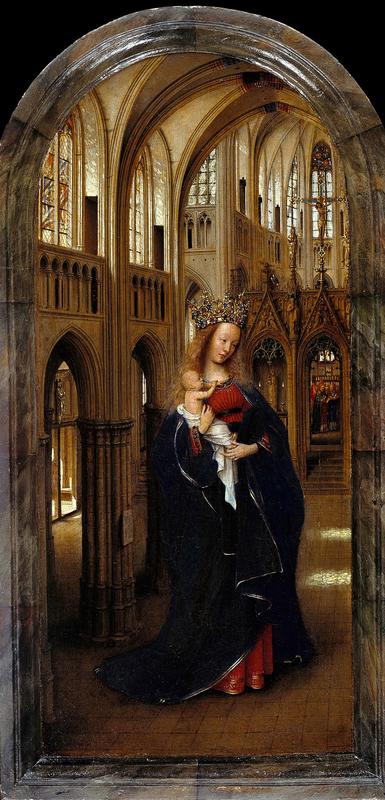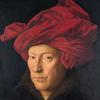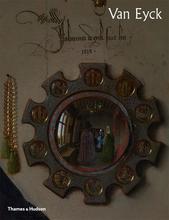More about The Madonna in the Church
- All
- Info
- Shop

Founder & President
Madonna in the Church reminds us that size doesn't really matter when it comes to art.
This artwork may look big on your computer, but it's a must-see in person because the real thing is actually only 12 inches tall! All the tiny detail you see is actually seriously tiny! Those guys you see hanging out in the back of the church are less than half an inch tall.
Because this painting is so impressively small it has become famous as an extra awesome example of van Eyck's work and also of paintings from his time. It was totally the fashion at that time to paint every single detail of a scene with painstaking accuracy even if the things were really far away and in reality, nobody would be able to see them that clearly.
That trend makes these Dutch paintings look trippy in a way that is hard to put your finger on if you don't know what's different about them. It's a bit like looking at somebody with no eyebrows and knowing there is something wrong without being quite able to say what.
Featured Content
Here is what Wikipedia says about Madonna in the Church

Madonna in the Church (or The Virgin in the Church) is a small oil panel by the early Netherlandish painter Jan van Eyck. Probably executed between c. 1438–1440, it depicts the Virgin Mary holding the Child Jesus in a Gothic cathedral. Mary is presented as Queen of Heaven wearing a jewel-studded crown, cradling a playful child Christ who gazes at her and grips the neckline of her red dress in a manner that recalls the 13th-century Byzantine tradition of the Eleusa icon (Virgin of Tenderness). Tracery in the arch at the rear of the nave contains wooden carvings depicting episodes from Mary's life, while a faux bois sculpture in a niche shows her holding the child in a similar pose. Erwin Panofsky sees the painting composed as if the main figures in the panel are intended to be the sculptures come to life. In a doorway to the right, two angels sing psalms from a hymn book. Like other Byzantine depictions of the Madonna, van Eyck depicts a monumental Mary, unrealistically large compared to her surroundings. The panel contains closely observed beams of light flooding through the cathedral's windows. It illuminates the interior before culminating in two pools on the floor. The light has symbolic significance, alluding simultaneously to Mary's virginal purity and God's ethereal presence.
Most art historians see the panel as the left wing of a dismantled diptych; presumably its opposite wing was a votive portrait. Near-contemporary copies by the Master of 1499 and Jan Gossaert pair it with two very different right-hand images: one is of a donor kneeling in an interior setting; the other is set outdoors, with the donor being presented by St Anthony. Both painters made significant alterations to van Eyck's composition, which may have brought the image more up to date with contemporary styles, but the copies have been described as "spiritually if not aesthetically disastrous to the original concept".
Madonna in the Church was first documented in 1851. Since then its dating and attribution have been widely debated amongst scholars. At first thought an early work by Jan van Eyck, and for a period attributed to his brother Hubert van Eyck, it is now definitively attributed to Jan and believed to be a later work, demonstrating techniques present in work from the mid-1430s and later. The panel was acquired for the Berlin Gemäldegalerie in 1874. It was stolen in 1877 and soon returned, but without its original inscribed frame, which was never recovered. Today Madonna in the Church is widely considered one of van Eyck's finest; Millard Meiss wrote that its "splendor and subtlety of [its depiction] of light is unsurpassed in Western art."
Check out the full Wikipedia article about Madonna in the Church
















